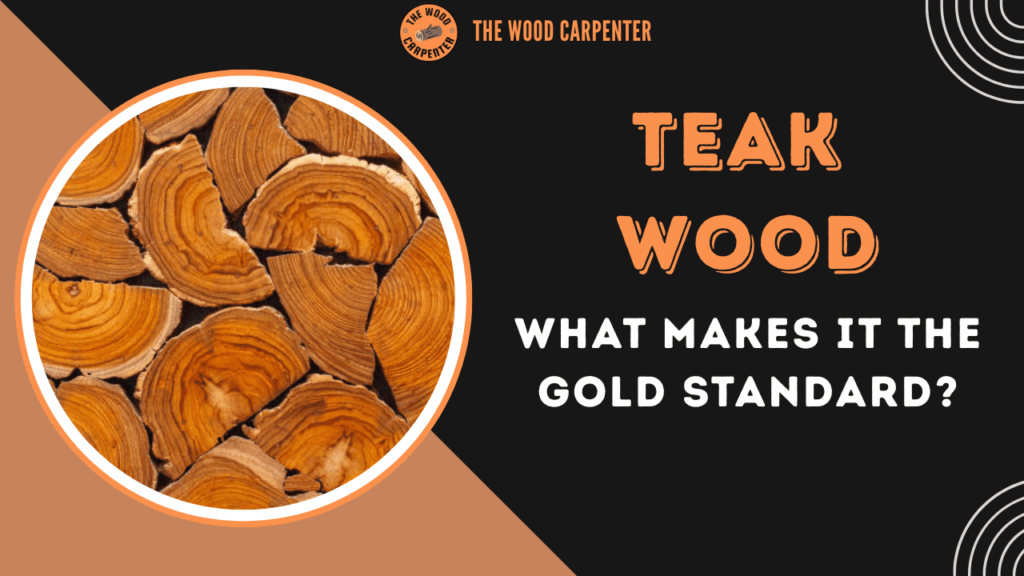
Teak wood is often called the “king of woods” because of its strength, beauty, and many uses. It comes from the Tectona grandis tree and has been valued for hundreds of years. People around the world use it for everything from building ships to making high-end furniture.
In this article, we’ll take a closer look at teak—where it comes from, what makes it special, how it’s used, and why it’s still one of the most popular hardwoods today.
Botanical Origin and distribution:
Teak (Tectona grandis) is a type of tropical hardwood that belongs to the mint family (Lamiaceae). It originally grows in the forests of South and Southeast Asia, especially in countries like India, Myanmar (Burma), Thailand, and Laos. Today, teak is also grown in plantations in places like Indonesia, Africa, the Caribbean, Central and South America, and Australia, because it can adapt well to warm, tropical climates.
The teak tree can grow very tall—up to 40 to 50 meters, with a thick trunk that can reach over 1 meter wide. It’s a deciduous tree, which means it loses its large leaves during the dry season to save water. Teak grows best in rich, well-drained soil and needs a clear dry season to produce the best quality wood.
Appearance and Characteristics
Color and Grain
Fresh teak wood has a golden to medium brown color, sometimes with hints of gray or red. As it ages and is exposed to air and sunlight, the wood becomes darker and richer in color.
Teak usually has a straight grain, though it can sometimes be slightly twisted. Its texture is smooth but uneven, and it feels a bit oily or waxy because of the natural oils in the wood.
Strength and Physical Properties
Density: 655–700 kg/m³ (when dry)
Hardness (Janka rating): 1,070–1,155 lbf — this means it’s harder than pine but still easier to work with than some very hard tropical woods
Crushing Strength: 7,940 lbf/in²
Bending Strength (Modulus of Rupture): 14,080 lbf/in²
Stability: Teak doesn’t shrink, swell, or warp much — it stays in shape even in changing weather
Natural Oils and Durability
One of the best things about teak is that it’s full of natural oils and silica. These make it very resistant to water, termites, rot, and fungi — even in hot, wet, or salty environments like near the ocean. Because of this, teak can be used outdoors without any treatment, and it slowly turns a beautiful silver-gray over time.
Ease of Use
Even though teak is a hardwood, it’s still fairly easy to cut, carve, and shape. You can also glue, screw, and polish it without much trouble. However, the silica in the wood can make tools become dull more quickly than with other woods. Teak also absorbs stains, waxes, and oils well, resulting in a smooth, high-quality finish.
Common Uses of Teak Wood
Marine and Boatbuilding
Teak has been used in shipbuilding for centuries because it is very strong and water-resistant. It’s perfect for decks, railings, and boat interiors, especially in saltwater environments where most other woods fail. Even today, teak remains one of the best choices for marine use.
Outdoor Furniture
Teak is one of the most popular woods for outdoor furniture like garden benches, patio chairs, and lounge sets. You’ll often see teak furniture in parks and gardens, where it can last for decades—or even a hundred years— with very little care.
Flooring and Decking
Because teak doesn’t easily absorb water and stays stable, it’s a great choice for both indoor and outdoor flooring, as well as for luxury decks.
Architecture and Home Design
Teak is often used in doors, windows, stairs, beams, and wall panels. It’s strong, long-lasting, and has a rich, elegant look, making it ideal for high-end homes and buildings.
Decorative and Custom Work
Teak is also used for cutting boards, kitchen counters, veneers, and fine carvings. Its smooth texture, rich color, and easy workability make it popular for detailed and artistic woodwork.
Cultural and Historical Importance
In places like India and Southeast Asia, teak has been used for centuries in temples, palaces, and traditional buildings. One famous example is the U Bein Bridge in Myanmar, made from teak and still standing after more than 150 years.
Lifespan and Care
Teak wood can last a very long time, even when used outside. Top-quality teak furniture can last over 50 years outdoors. In fact, some old park benches in the UK made from teak are almost 100 years old and still being used! Indoors, teak can last for generations with just a little care.
Teak naturally contains protective oils, so it doesn’t need much maintenance. You can leave it untreated, and it will slowly turn a nice silver-gray color. Or, if you prefer its original golden-brown look, you can clean it and apply oil every few years.
Growing Teak and Protecting Forests
Teak trees grow fairly fast for hardwoods. In managed plantations, they can be ready to harvest in 20–25 years. Well-managed teak forests can produce 10–15 cubic meters of wood per hectare every year.
Because of its popularity, teak is now grown in many plantations around the world. This helps reduce pressure on natural forests. However, old-growth teak, especially from Myanmar, is still highly valued for its unique color and grain. Cutting down natural forests for this wood has caused environmental damage in the past.
Thankfully, sustainable practices are more common now. Look for FSC-certified teak (Forest Stewardship Council), which means the wood was grown and harvested in a responsible and eco-friendly way.
Also read:
Pecan Wood: Discover the Pros, Cons, and Little-Known Facts
Hickory Wood: Everything You Need to Know
Cumaru Wood: Uses, Drawbacks & Comparisons
What Makes Teak Special ?
Stays Stable – Teak doesn’t shrink or swell much with temperature or humidity changes.
Weather-Proof – It can handle sun, rain, snow, and humidity without rotting or cracking.
Bug-Resistant – Teak naturally keeps away termites and other wood-eating bugs.
Beautiful Look – Its smooth grain and rich color make any project look classy and warm.
Health and Safety Tips
Teak is usually safe to work with, but some people may be sensitive to its dust or natural oils. It might cause mild skin, eye, or breathing irritation. If you’re cutting or sanding teak, it’s best to wear a mask and gloves to stay safe.
Final Thoughts
Teak wood has been loved for centuries—from old ships to modern luxury homes. It’s strong, beautiful, and lasts a lifetime. Whether you’re a woodworker, builder, or buyer, teak is a top choice for both style and strength.
As more people care about the environment, sustainably sourced teak continues to shine as a smart, long-lasting, and eco-friendly material. It truly is a timeless wood that tells a story across generations.
FAQs About Teak Wood
1. What is teak wood?
Teak comes from the Tectona grandis tree. It’s a tropical hardwood known for its golden-brown color, natural oils, and long life.
2. Why is teak so valuable?
It’s very resistant to water, insects, and rot. It lasts for decades with little care and looks beautiful too.
3. Why is teak great for outdoor use?
Its natural oils and silica make it weatherproof, so it won’t crack or rot in sun, rain, or snow.
4. Does teak need special care?
No. You can leave it alone and it will turn silver-gray, or clean and oil it sometimes to keep its golden color.
5. How long does teak furniture last?
Good teak furniture can last 50 years or more, even outside. Some benches in Europe are nearly 100 years old!
6. Is plantation teak as good as old-growth teak?
Plantation teak is strong and durable. Some experts prefer the color and grain of old-growth teak, but plantations are better for the environment.
7. Is teak wood sustainable?
Yes—if it’s grown responsibly. Look for FSC or similar certifications to make sure it’s eco-friendly.
8. What are common uses of teak wood?
Teak is used for boats, outdoor furniture, flooring, decks, cabinets, paneling, countertops, and decorative items.
9. Can teak cause allergies?
Some people may have mild reactions to teak dust or oil. Use a mask and gloves when working with it.
10. Why does teak change color?
Teak turns silver-gray over time in the sun and rain. This doesn’t affect its strength and many people find the aged look beautiful.

